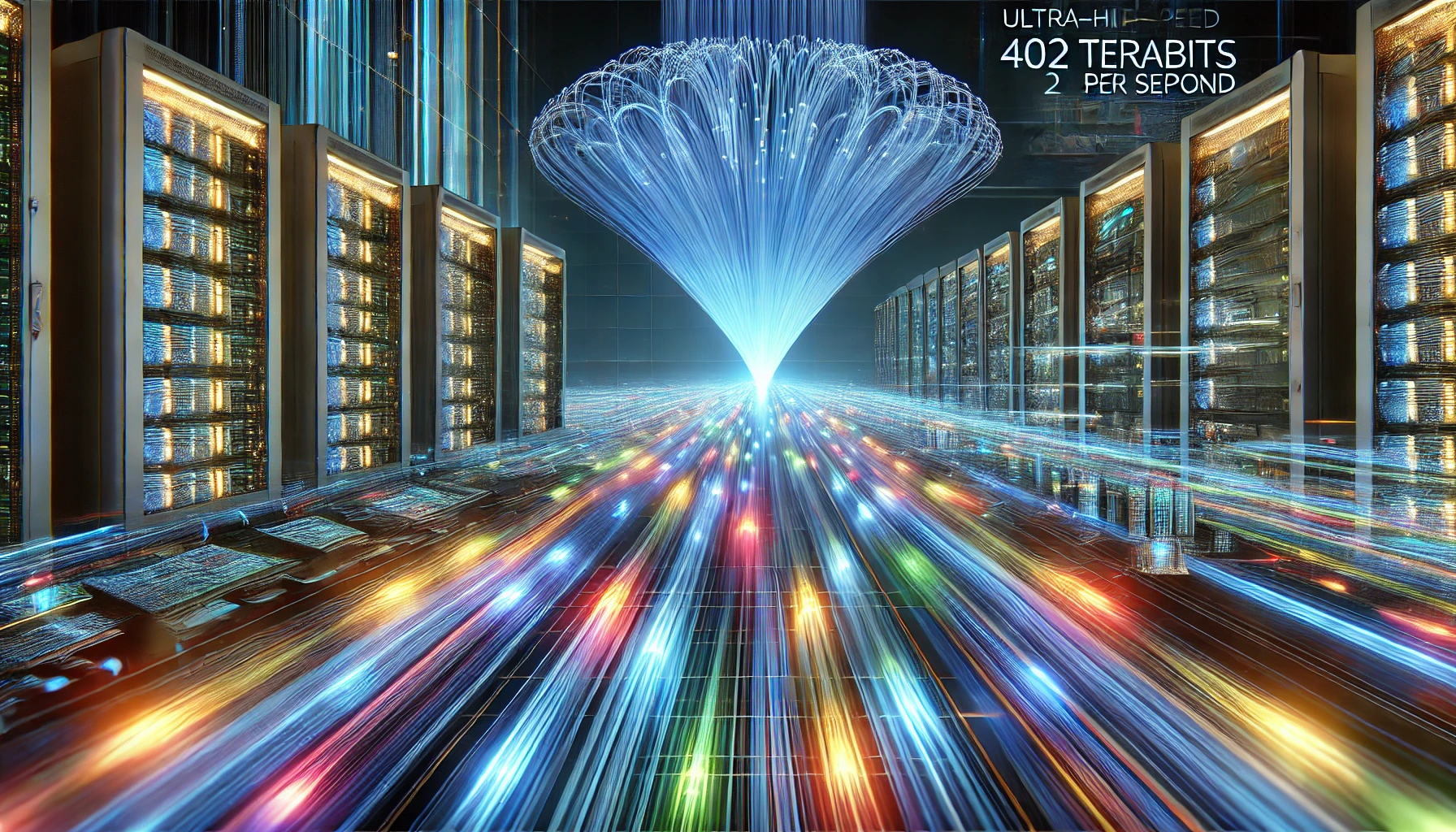- November 25, 2024
402 Terabits a Second: The Future of Data Transmission

402 Terabits a Second: The Future of Data Transmission
In a groundbreaking achievement, scientists and engineers have demonstrated data transmission speeds of 402 terabits per second (Tbps). This represents a quantum leap in communication technology, capable of transforming industries and redefining the limits of connectivity. Let’s explore what this speed means, the technological innovations enabling it, and its potential applications.

What is 402 Terabits a Second?
At 402 Tbps, a network can transmit 402 trillion bits of data every second. To put this into perspective:
- You could download 50 terabytes (TB) of data in just one second.
- The entire Netflix library could be downloaded in a few seconds.
- It surpasses the average internet speed available to consumers by millions of times.
Technological Innovations Enabling 402 Tbps Speeds
Achieving 402 Tbps requires cutting-edge advancements in optical communication technologies:
- Wavelength Division Multiplexing (WDM): Using multiple light wavelengths to carry data through a single optical fiber.
- Multi-Core Fiber: Fiber optic cables with multiple cores to increase capacity without increasing size.
- Advanced Modulation Techniques: Encoding more data per light pulse to maximize efficiency.
These innovations are the foundation for achieving ultra-high-speed communication in real-world applications.
Applications of Ultra-High-Speed Data Transmission
The potential of 402 Tbps extends across numerous industries:
- Global Internet Backbones: Ensuring faster, more reliable global connectivity.
- Cloud Computing: Revolutionizing data centers with seamless big data transfer.
- Space Communication: Supporting interplanetary missions with real-time data exchange.
- Scientific Research: Accelerating projects like genome sequencing and AI model training.
- Streaming Services: Unlimited 8K or even 16K content streaming without buffering.
Comparison with Current Internet Speeds and Standards
Today’s consumer internet speeds, typically measured in megabits per second (Mbps) or gigabits per second (Gbps), are a fraction of this breakthrough. Even state-of-the-art 5G networks max out at 10 Gbps, while fiber-optic home internet averages 1-2 Gbps. The leap from gigabits to terabits is monumental and could redefine accessibility.
Engineering and Scalability Challenges
While the science behind 402 Tbps is revolutionary, its implementation faces significant hurdles:
- Infrastructure Upgrades: Replacing existing cables and hardware with compatible systems.
- Signal Loss Over Distance: Maintaining high-speed signals over long distances requires advanced repeaters and amplifiers.
- Cost: Deployment on a global scale will be expensive and time-intensive.
Future Implications for Emerging Technologies
Ultra-fast communication opens doors for new technologies and advancements:
- Metaverse: Real-time virtual interactions with no lag.
- Autonomous Systems: Faster data exchange between self-driving cars and IoT devices.
- AI Development: Real-time model training with massive datasets.
Energy Efficiency and Environmental Impact
One concern with high-speed networks is the energy consumption required for such performance. Innovations in energy-efficient hardware and cooling systems will be crucial to minimize environmental impact.
Data Security and Privacy at High Speeds
With data moving at such unprecedented speeds, cybersecurity becomes critical. Encrypting and monitoring large volumes of data in real-time will require new solutions to prevent breaches.
Economic and Industrial Transformation Potential
High-speed communication will revolutionize industries like finance, healthcare, and entertainment. For example:
- Telemedicine: Real-time diagnostics with ultra-high-resolution imaging.
- Financial Trading: Faster transactions for high-frequency trading.
Feasibility of Commercial Deployment
While 402 Tbps has been achieved in controlled lab conditions, commercialization could take decades. Collaboration between governments, tech companies, and research institutions is essential for scaling this technology.
Research and Experimental Milestones Leading to 402 Tbps
This achievement builds on years of innovation in fiber optics. Previous milestones include:
- 1 Tbps Transmission (2001): The early breakthrough in terabit speeds.
- 100 Tbps (2012): Multi-core fiber advances.
- 402 Tbps (Recent): The latest step forward, paving the way for future innovations.
Conclusion
The achievement of 402 Terabits a Second marks a monumental step in communication technology. While challenges remain in scalability and energy efficiency, the potential applications are transformative. From revolutionizing industries to enabling the next generation of technologies, this breakthrough is a glimpse into a truly connected future.
1 Comments
Nice information